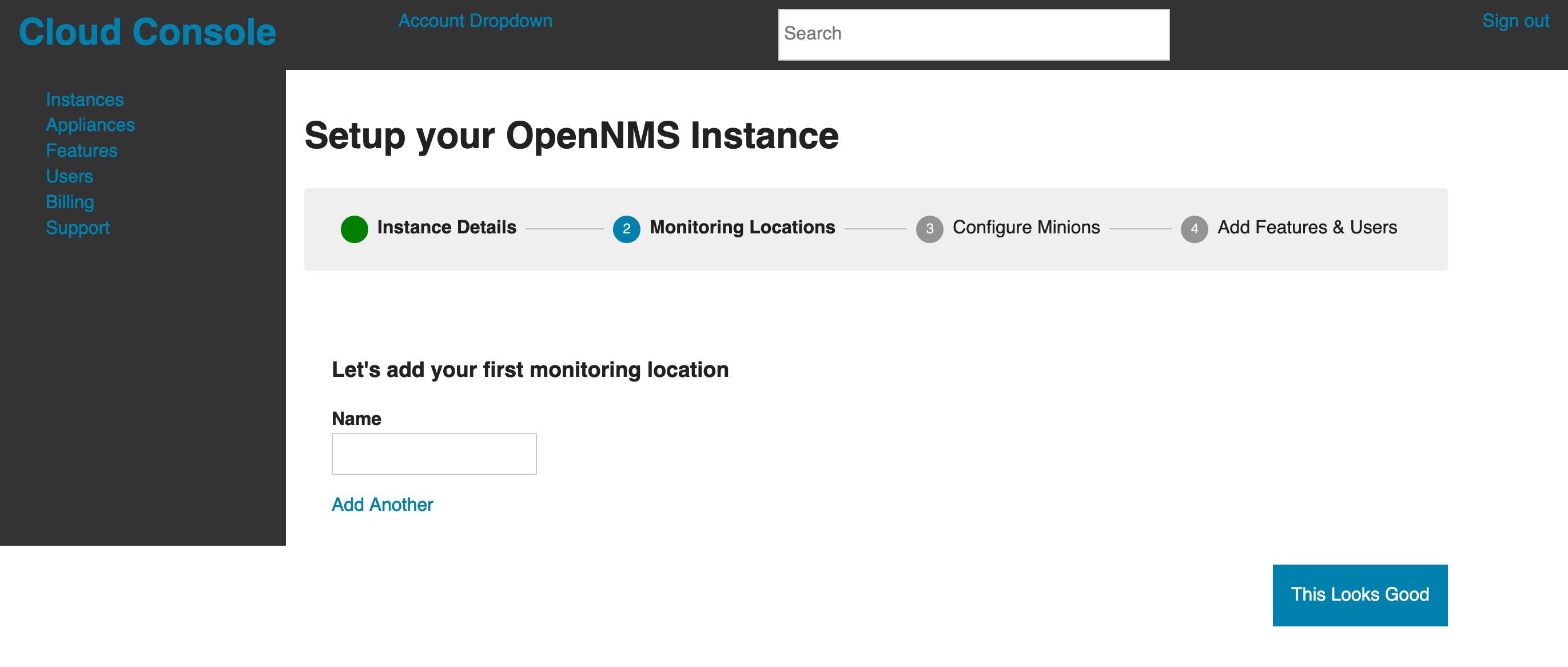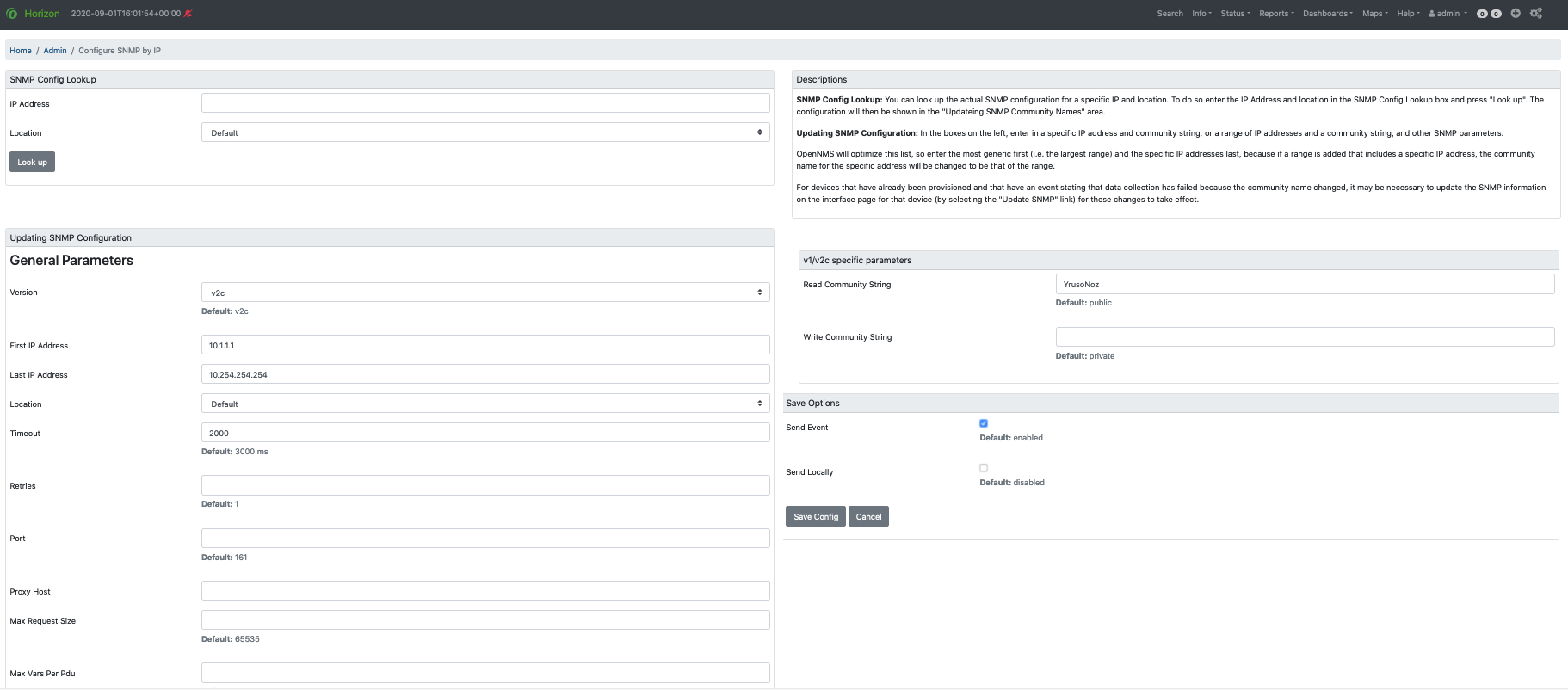OpenNMS
OpenNMS is a 20 year old open source project that was acquired last year and investing for growth.
As the first designer for network monitoring platform built by developers for developers, it needed to level up to achieve growth targets. I started the process to guide their solutuion to a cloud model while simplifying the UI.
I facilitated a workshop with senior leadership in order to get on the same page for what a "cloud" vision would look like and started to iterate our way there.
Prototyping to MVP
Setup & Onboarding
Migrating from an on-premise solution, we needed a way to create an instance, since users would not be able to run install scripts locally anymore.
I worked on putting some simple steps together to highlight the important aspects for a network admin to get setup.
This included being able to remove a lot of manual steps that were currently taken since we would be able to automate alot of things behind the scenes, resulting in a much more efficient time savings, which was part of the future value proposition.
view prototype

Discovering Nodes
With a quick setup complete, organizations would also be able to take advantage of a quicker time to first value by connecting key steps in the process to start monitoring.
Current pages utilized long and clunky forms, and features were disconnected.
By adding a reusable flow to manage device inventory that guided users through the process, and allowed for testing right there, anyone could start adding nodes if they were just evaluating the solution or wanting to add many pieces of an enterprise network.
Current

Configuring Monitored Services
one of the most powerful features is the ability to track different types of services on a device and collect data from them utilizing SNMP.
To allow the system to poll the device and grab that data it needed some login information, but again these forms were on seperate and not related pages.
To tie this common use case together, I allowed network engineers to choose the services that were important for them to detect and then easily input the corresponding information needed by the system.
Current

Proposed

